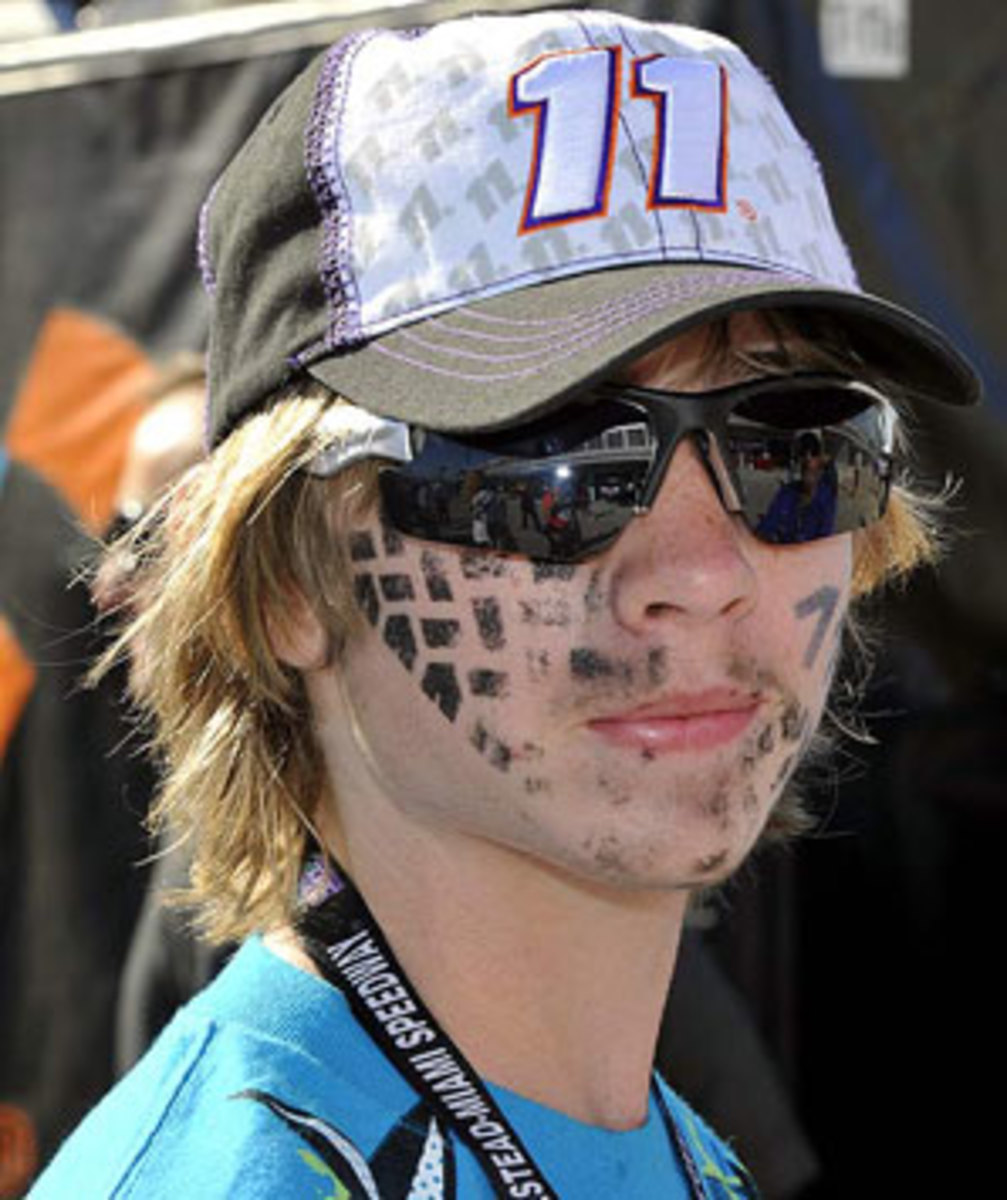NASCAR, IndyCar search for ways to attract younger fan base
A regular season of stark realization over just how hard a sell motorsports currently is has become an offseason of navel-gazing for those who promote events. Indeed, times are rancid. NASCAR contested, arguably, its greatest Chase for the Championship to weak attendance and television ratings and the IZOD IndyCar Series continued to battle its own similar realities despite presenting yet another tight championship battle.
Much of the consternation within the industry involves how to rekindle an interest not only among the market-moving 18-to-34-year-old demographic, but also in children who are, for various reasons, losing interest or never getting a chance to gain interest in racing. It's somewhat ironic that the sport has lost that precious swathe of society as its drivers -- especially in NASCAR -- skewed increasingly youthful the last decade.
THE PROBLEM: Youth gone mild
Jerry Gappens, president of New Hampshire Motor Speedway: "The demographic of 18 to 34 has dropped 67 percent over the last three years in NASCAR. The problem is that we're at the tail end of actually skipping a generation. You try to get a 10-year-old to watch a race and you're competing with $100 million dollar production movies. They put couches almost in theatres, 3-D, the theatres are super nice compared to what they used to be. I had to go out in the backyard and race bikes or, if we were lucky, put pieces together for a minibike or go-kart, and when I was nine years old I was lucky enough to go to the Indy 500 and that was bigger than life. Society has changed, kids can be entertained without even getting off their butts."
"We screwed around there for 10 years, 15 years. Everything was going really well and you couldn't screw it up, and then all of a sudden that growth stopped and came back down a couple factors and we thought, 'Oh, we didn't do a very good job promoting and reaching out and trying to make ourselves better.' We're paying a price for that now."
SOLUTION: Kiss butts, babies
Ken Schrader, NASCAR driver, short track owner: "Short tracks, they charge $10-12 to go out and sit on a splintery 2 by 4 and [fans] get all dusted out and have to sit there for five hours instead of three hours, and that's just what we have to do as a facility, clean them up, make them family-friendly, better lights so they can see the show, less dust, more entertainment between the races, run races as quick as we can, get them out of there between 10 - 10:15, enough time that the parents can brings the kids down to the cars afterwards. Nothing makes me happier than signing autographs and there's kids there and you put them in the car. I remember doing that stuff. It's a business and we have to run it better. It's like a bad restaurant. Bad service and bad food. Well it's not going to stick around long."
SOLUTION: Put them in the race
Randy Bernard, IZOD IndyCar Series CEO: "I think one of the things we need to do is take racing to kids, and one of the ways to do that is through interactive media. The sophistication of games today, and how they'll be two, three years down the road will be completely different. There are a lot of people -- big experts -- who believe that you can actually have an interactive car, that you could actually be in a race. It would be very similar to I-Racing, but the person at home would actually be in the racing going on live, the actual race. It's a goal."
SOLUTION: Put them in charge
Denis McGlynn, president and CEO Dover Motorsports: "We really could use Sprint or some like industry member to develop a device that would really enhance the on-site customer experience. I think the closest thing we have right now is the Sprint Fan View. They're pretty cool, but I really think in the context of what we're talking about now, they need a way to expand the utility of that device so that kids can talk to kids in the speedway because right now all they can do is listen. They need to have ways to text or Twitter other fans.
"Let's say you have a Joey Logano fan and he has a Fan View in his hand, it would be cool if he could communicate with other Joey Logano kids holding other Fan Views somewhere else in the speedway. Those kinds of things, we need to develop and show that we deliver ... All these NASCAR-related TV shows or radio outlets, I really think they ought to have kid reporters out in the crowd, kids talking to kids. Because kids, with the multi-tasking they do and all the inputs they're used to absorbing per hour, I don't think sitting down in front of a TV and watching a NASCAR race is going to capture their interest. They need to be here and see the magnitude of it and understanding what they're seeing, and no one can do that for a kid than another kid."
Moves are being made. Motorsports is trying, because it knows survival is now an issue with racing fans statistically the oldest of all professional sports. NASCAR and IndyCar are adjusting garage protocols to cater to families, promoters are reducing junior ticket prices. But losing that demographic required a multitude of mistakes and unfortunate circumstances. Regaining it, if at all possible, will be just as multi-layered.






